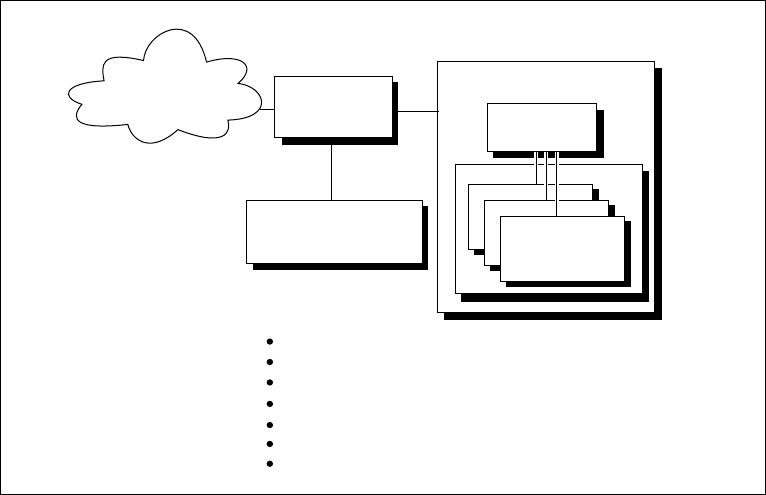Product Description Part 2

RBS 210 6 and RBS 2206 Radio Configurations
1 Introduction
The radio configurations described are valid for RBS 210 6 and RBS 2206,
equipped w ith a m aximum of six dTRUs/12 TRXs per cab inet. The d escripti ons
include basic configurati ons, site cell configurations, and co-s iting. They also
include informa tion about configurations with CDU-G and CDU-F as well as
valid GSM frequencie s (the GSM 800 configurations are valid from BSS R9).
1.1 Mobile Telephone System
P007534B
PSTN
SS
OSS
BSS
BSC
BTS
RBS 2000
SS Switching System
OSS Operation Support System
BSS Base Station System
BSC Base Station Controller
RBS Radio Base Station
BTS Base Transceiver Station
PSTN Public Switched Telephone Network
Figure 1 RBS 2000 in the Ericsson GSM System
The Base Station System (BSS) contains two fu nctional entities; th e Base
Station Controller (BSC) and the Base Transceiver Stat ion (BTS).
The BSC handles radio-related functions, such as handover, management of
the radio network resources, and cell configuration data. It also co ntrols radio
frequency power levels in RBSs and MSs.
The BTS is a network component which serves one cell and is co ntrolled
by the BSC. The BTS contains a number of transceivers. It consists of the
radio transceivers and all the digital signal processing equipment. RBS 2000
contains equipment for 1 – 3 BTSs.
3 (62)
EN/LZT 720 0318 Uen R5A










